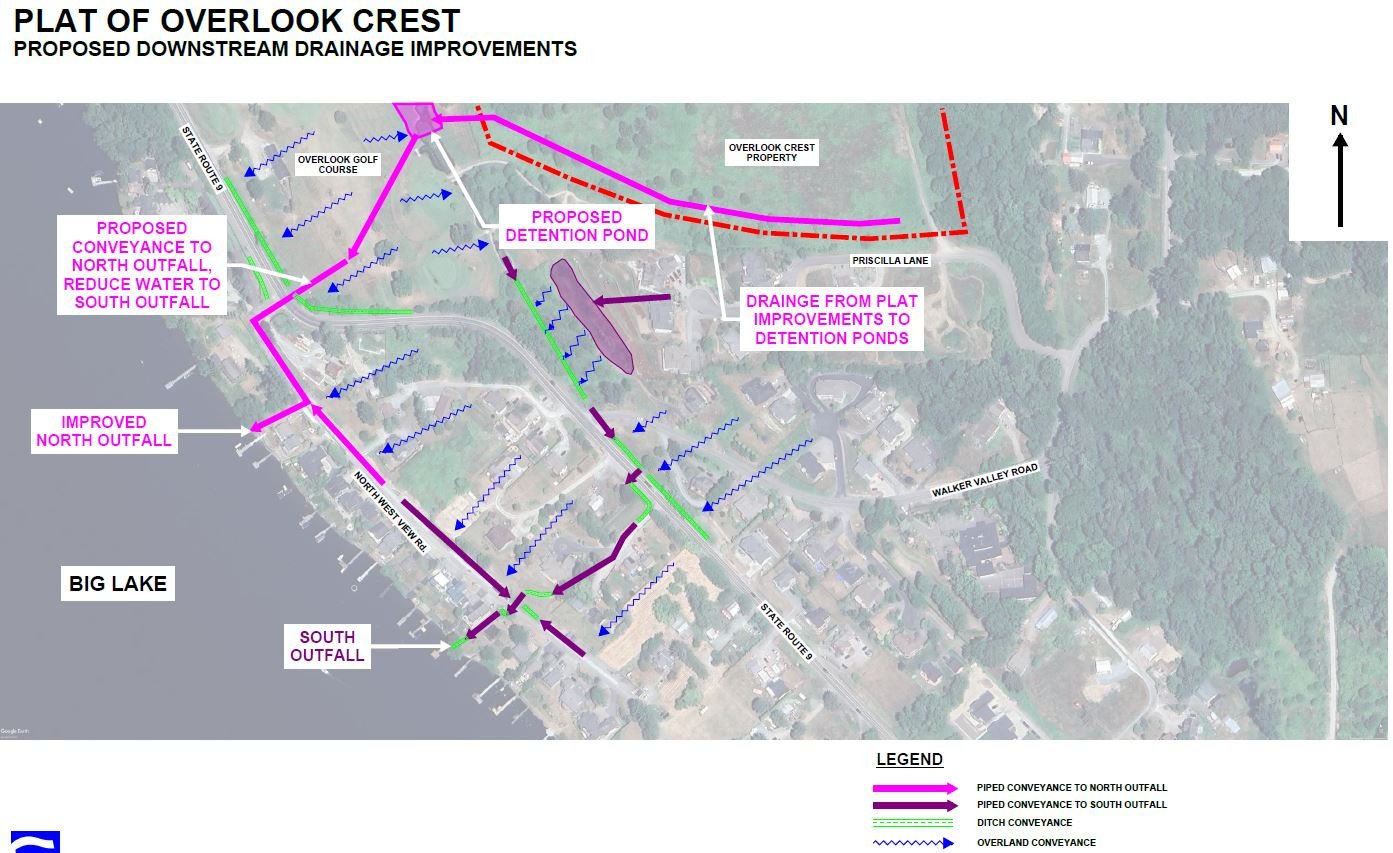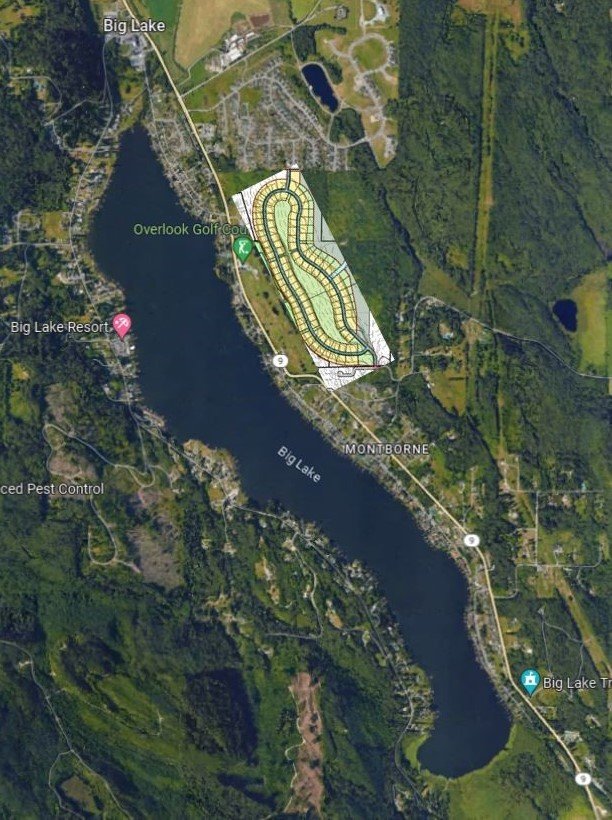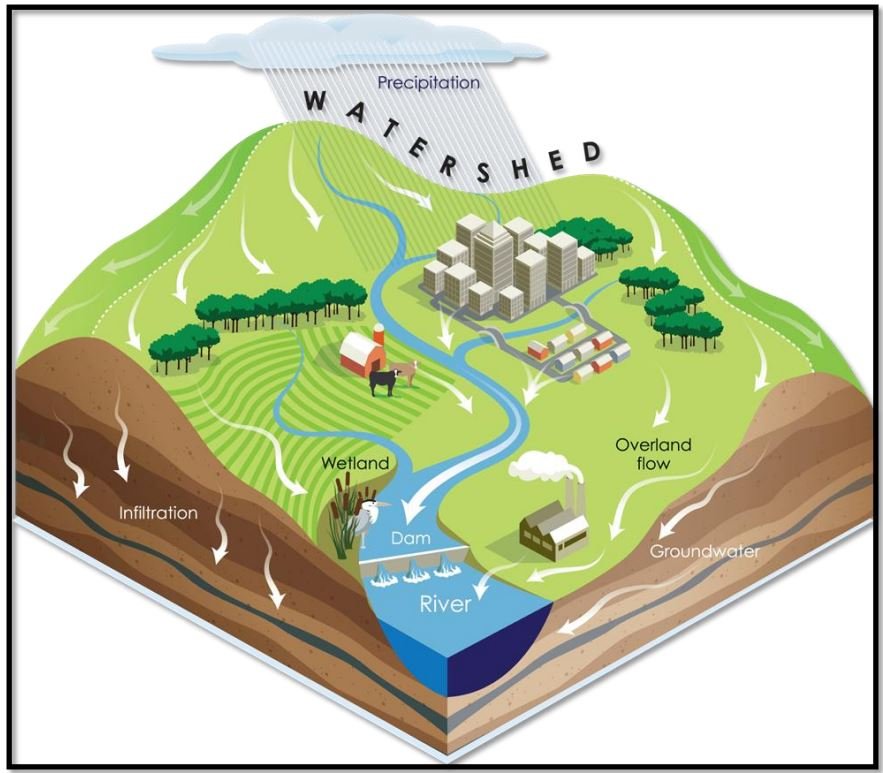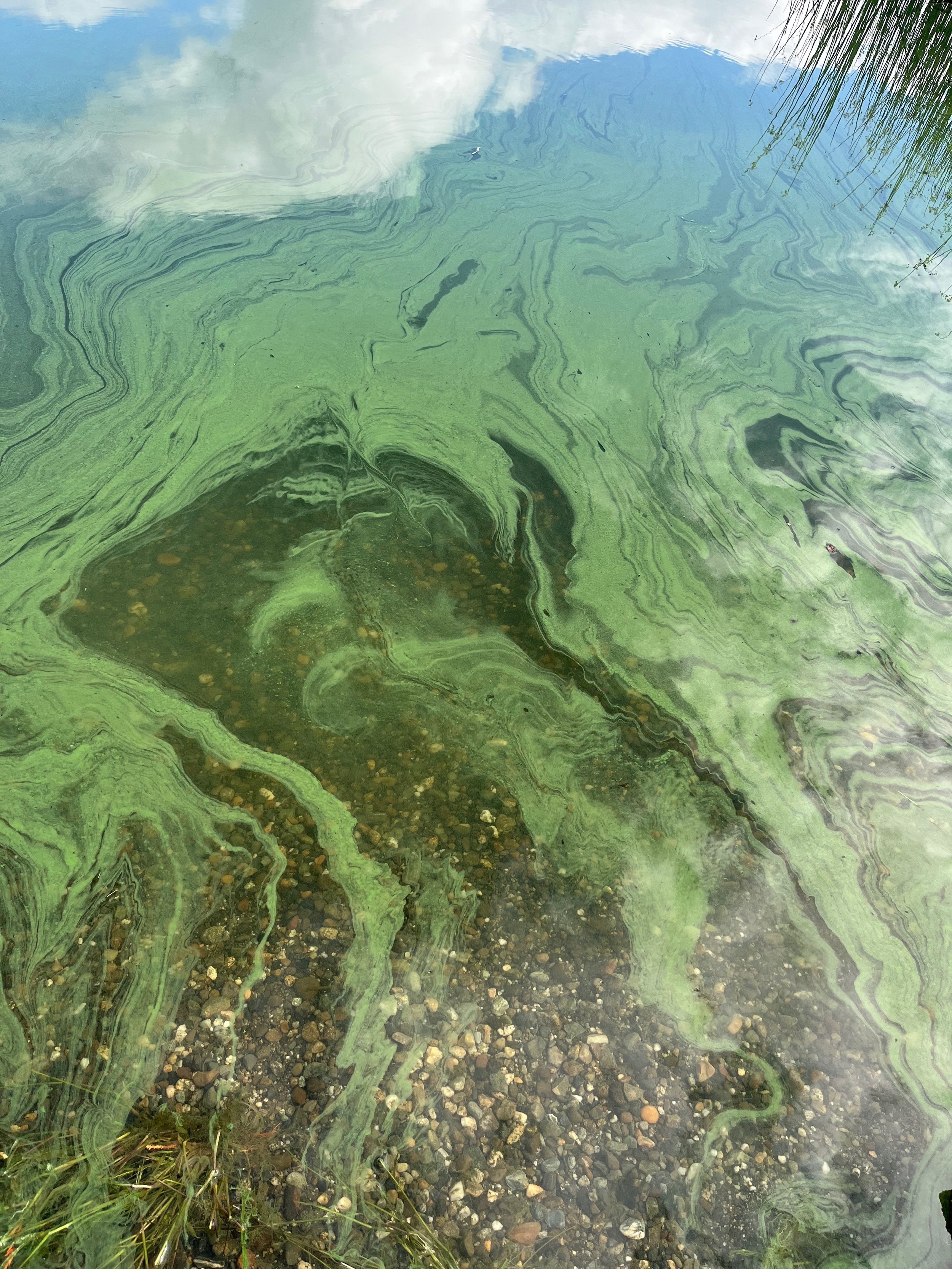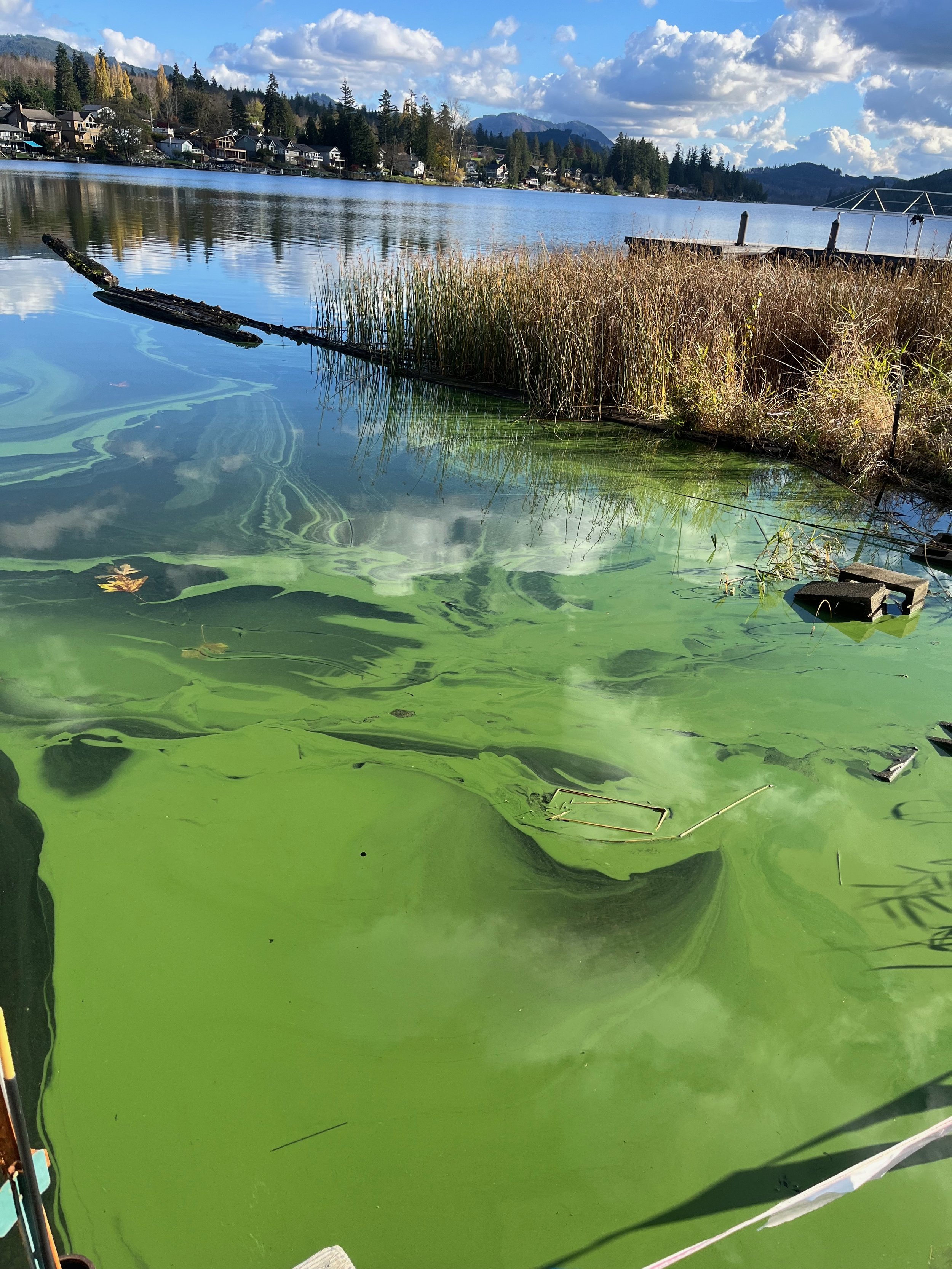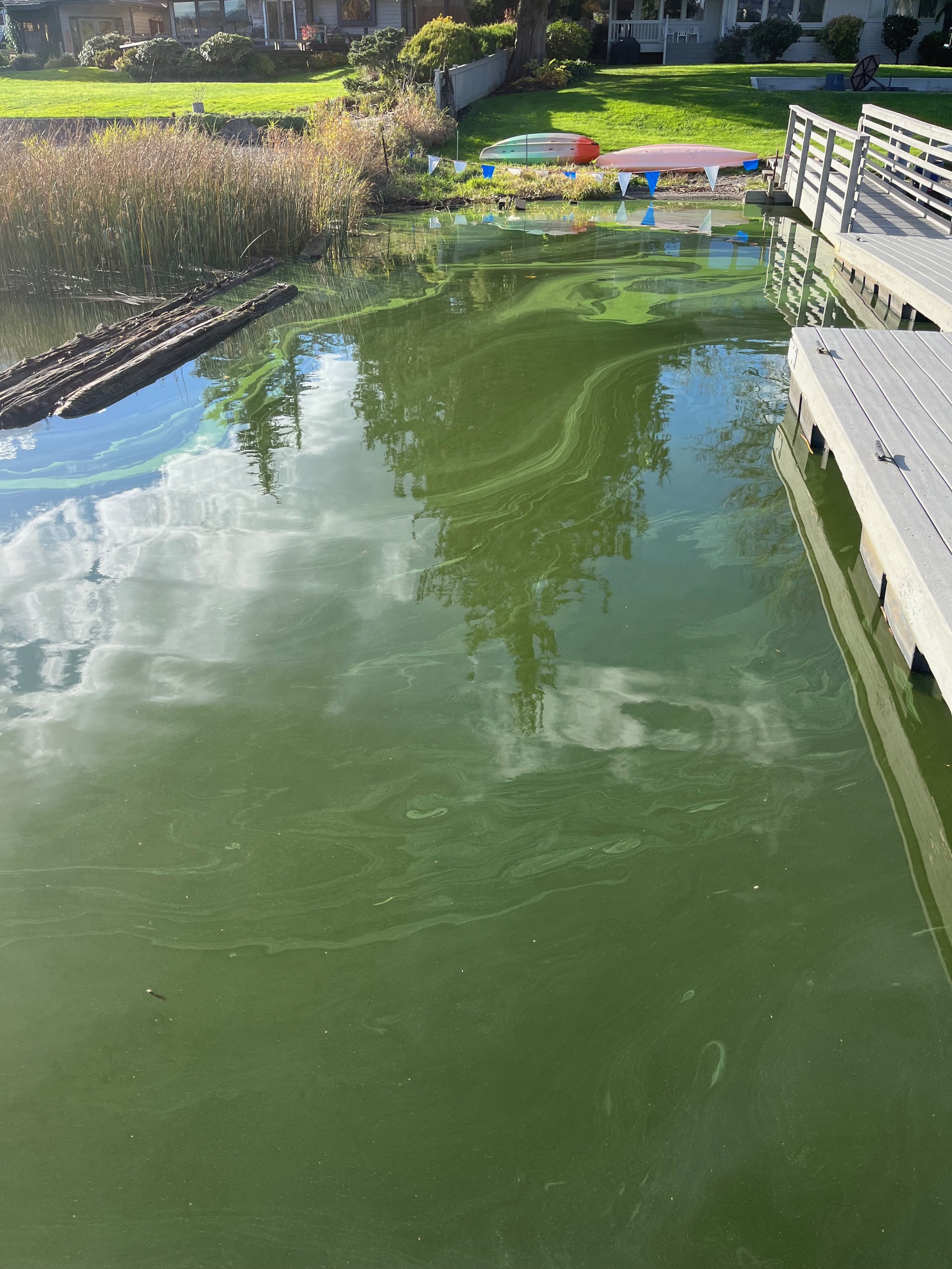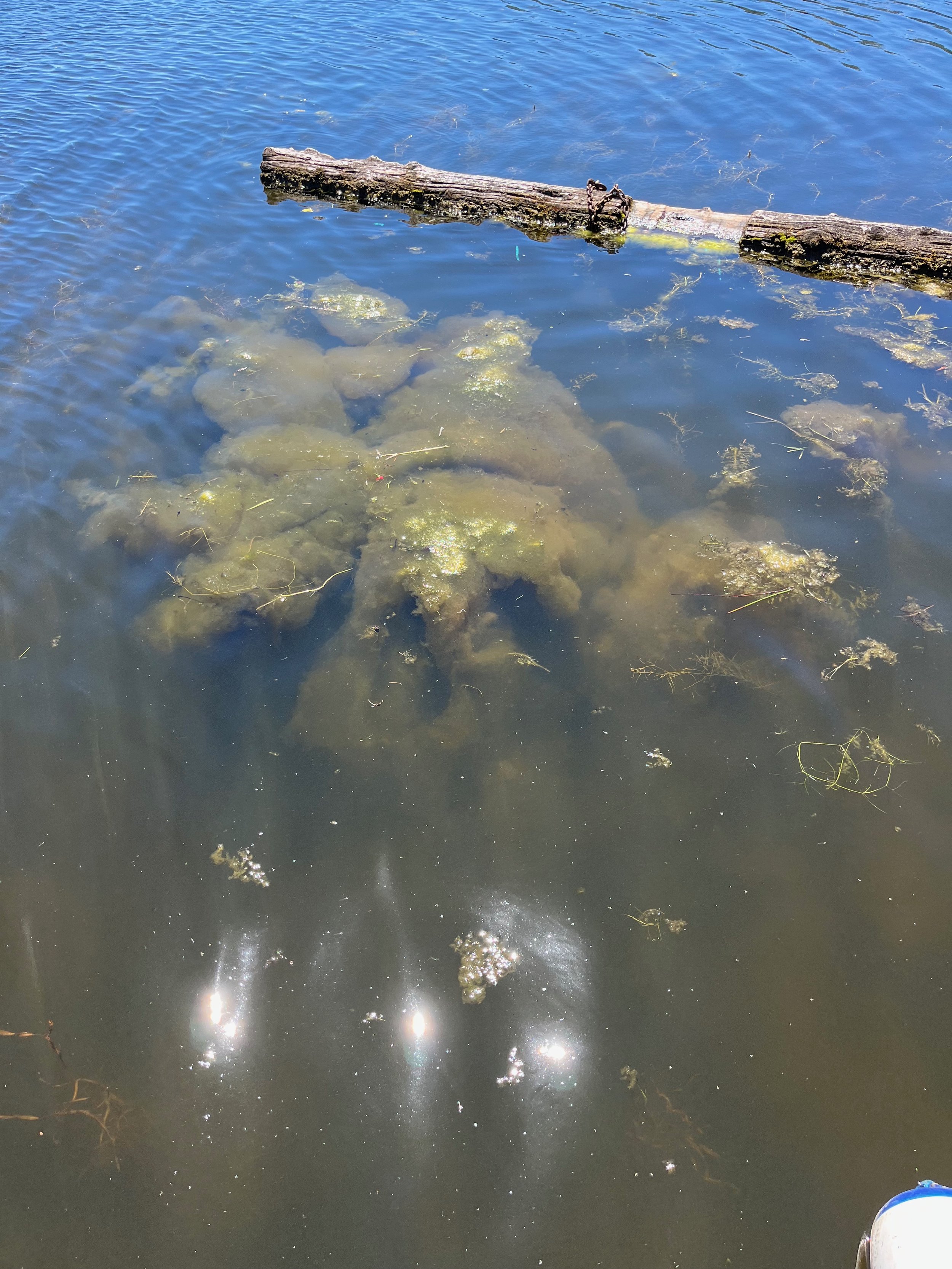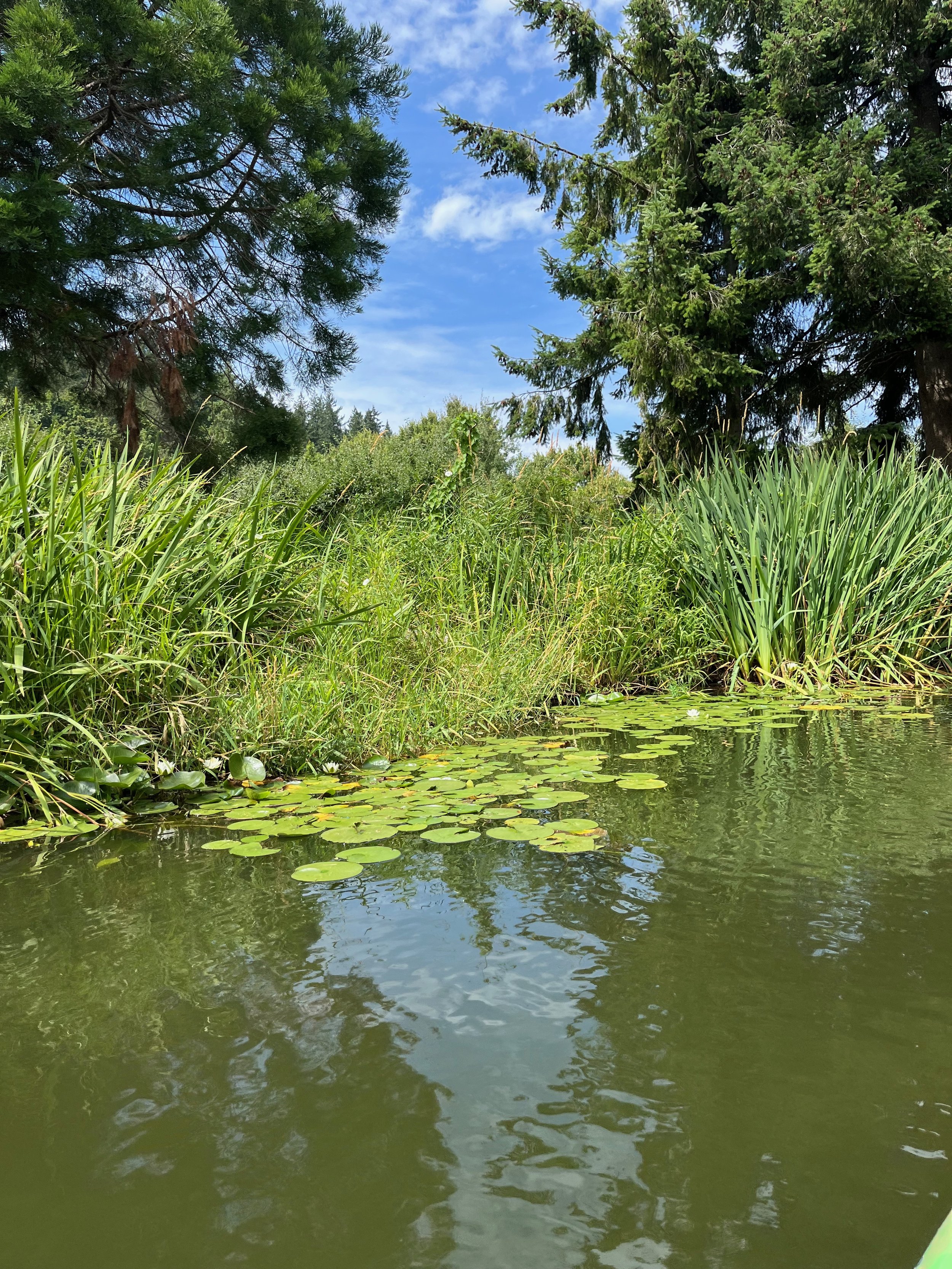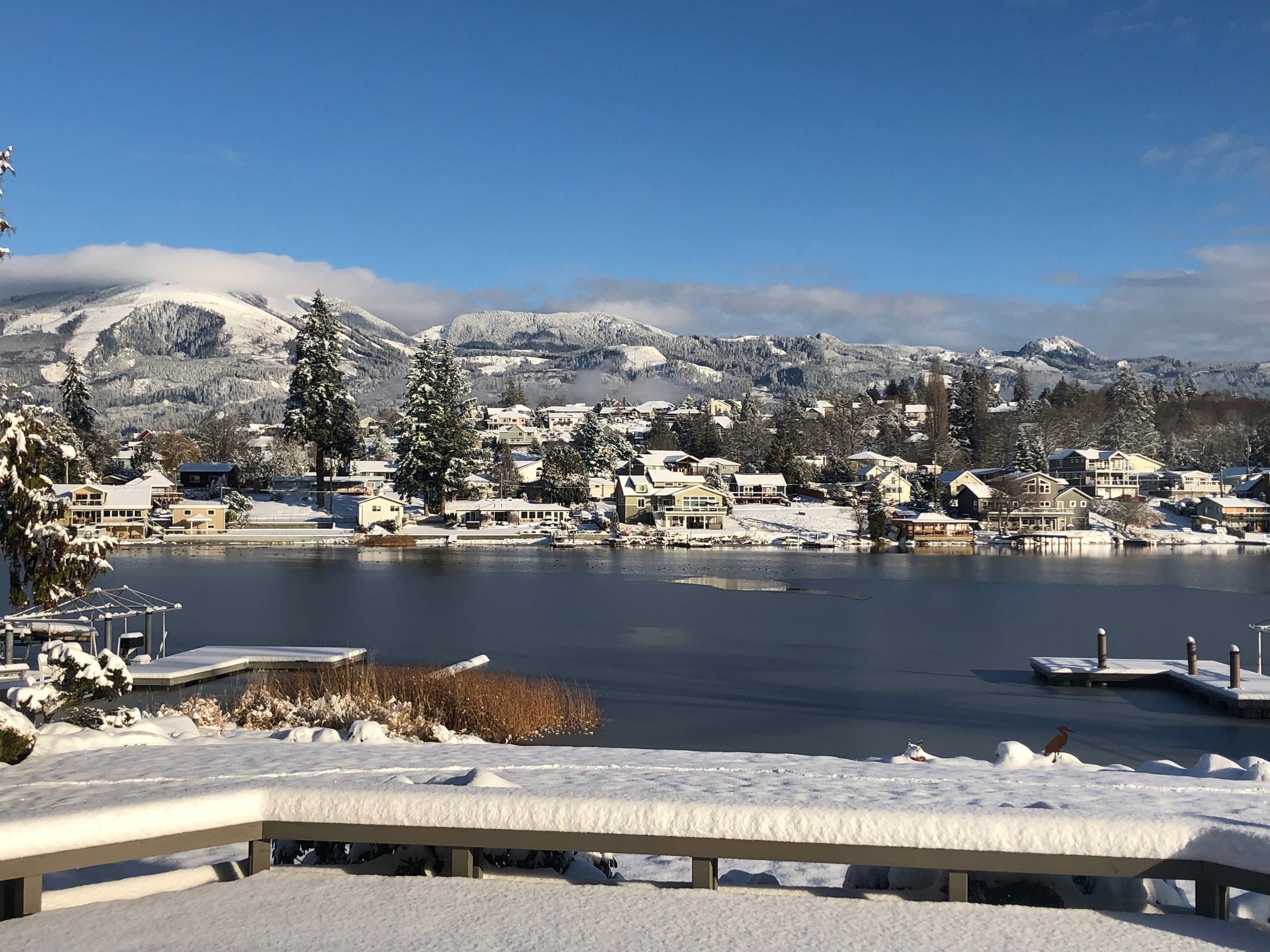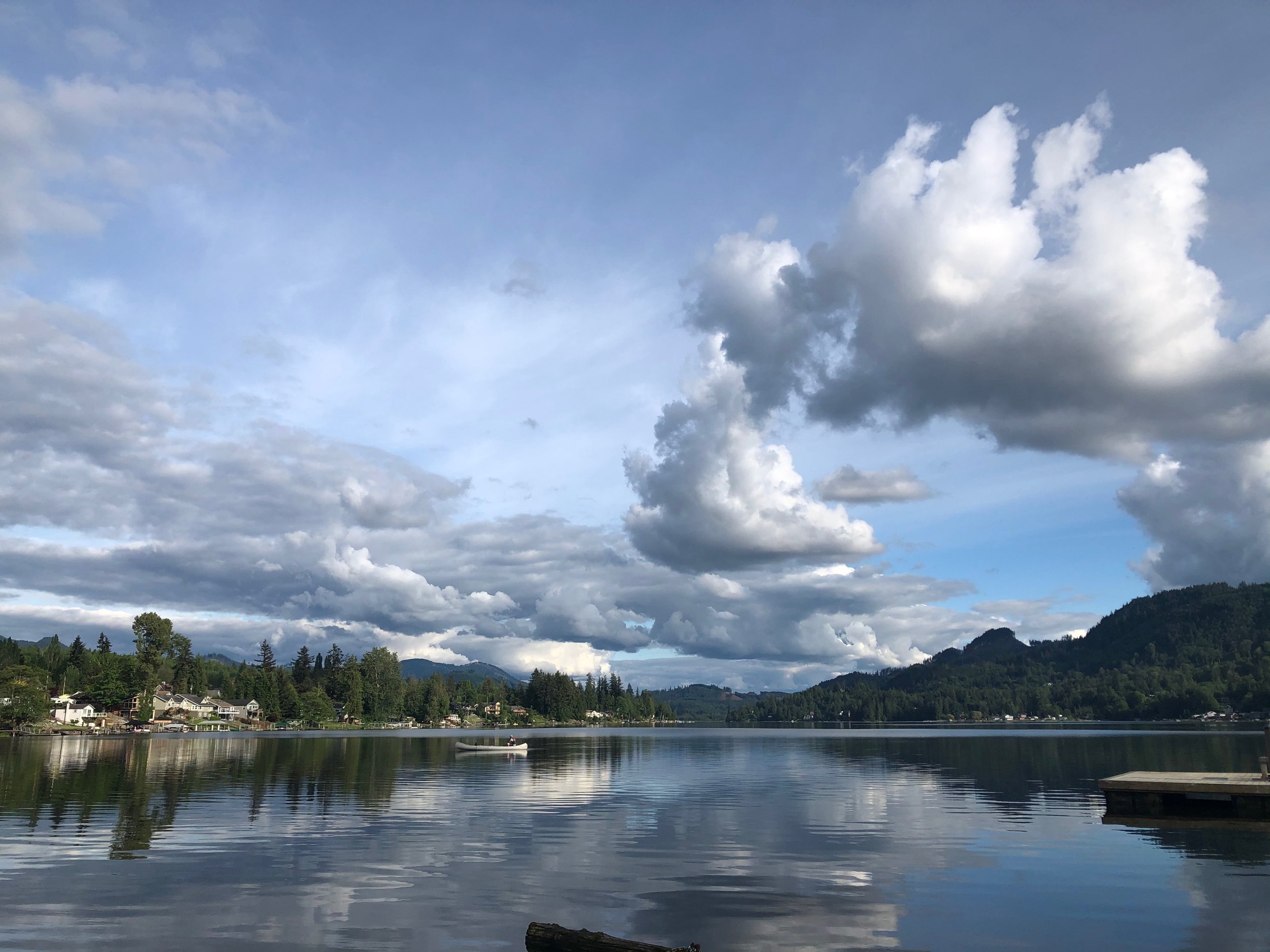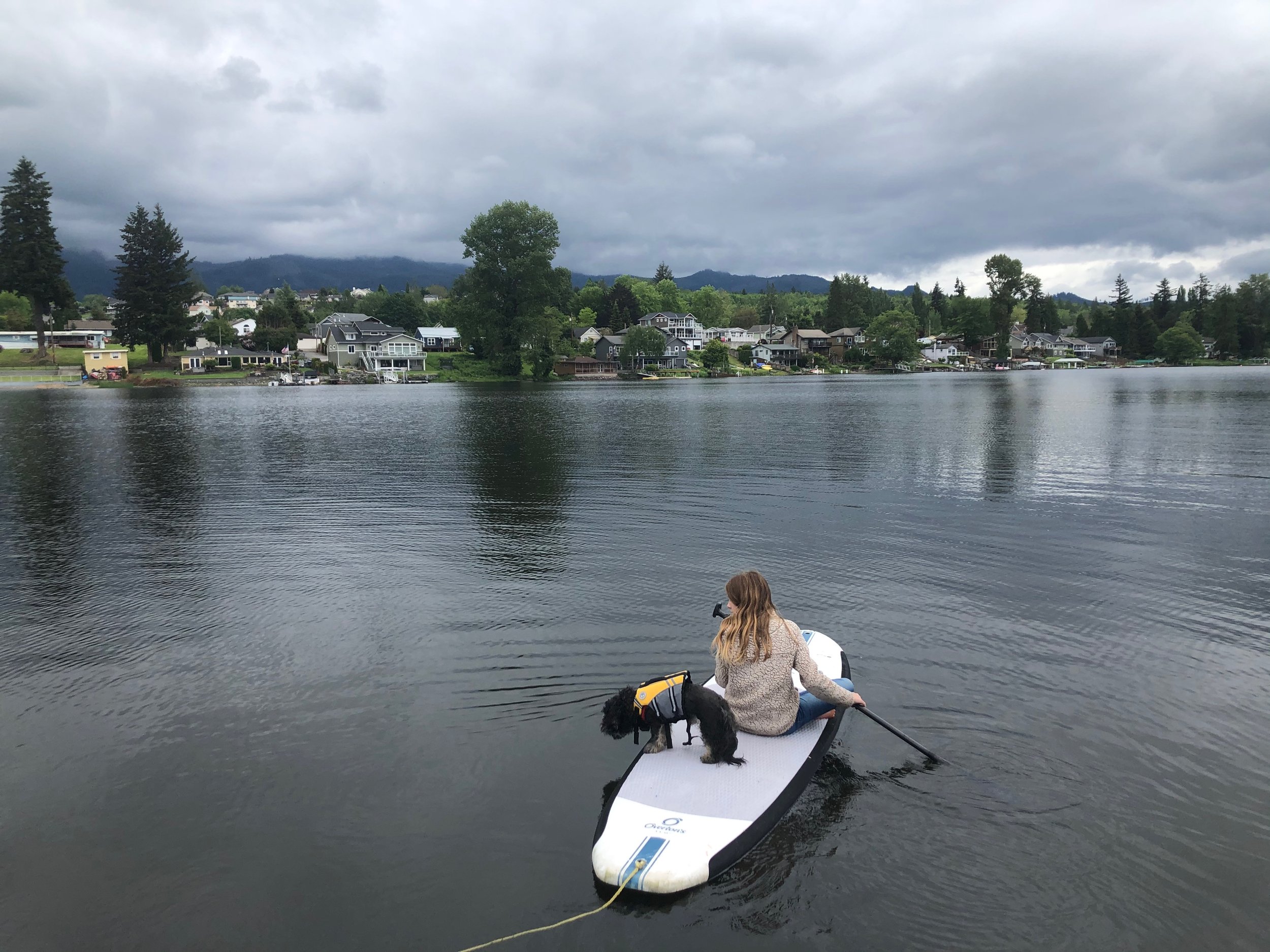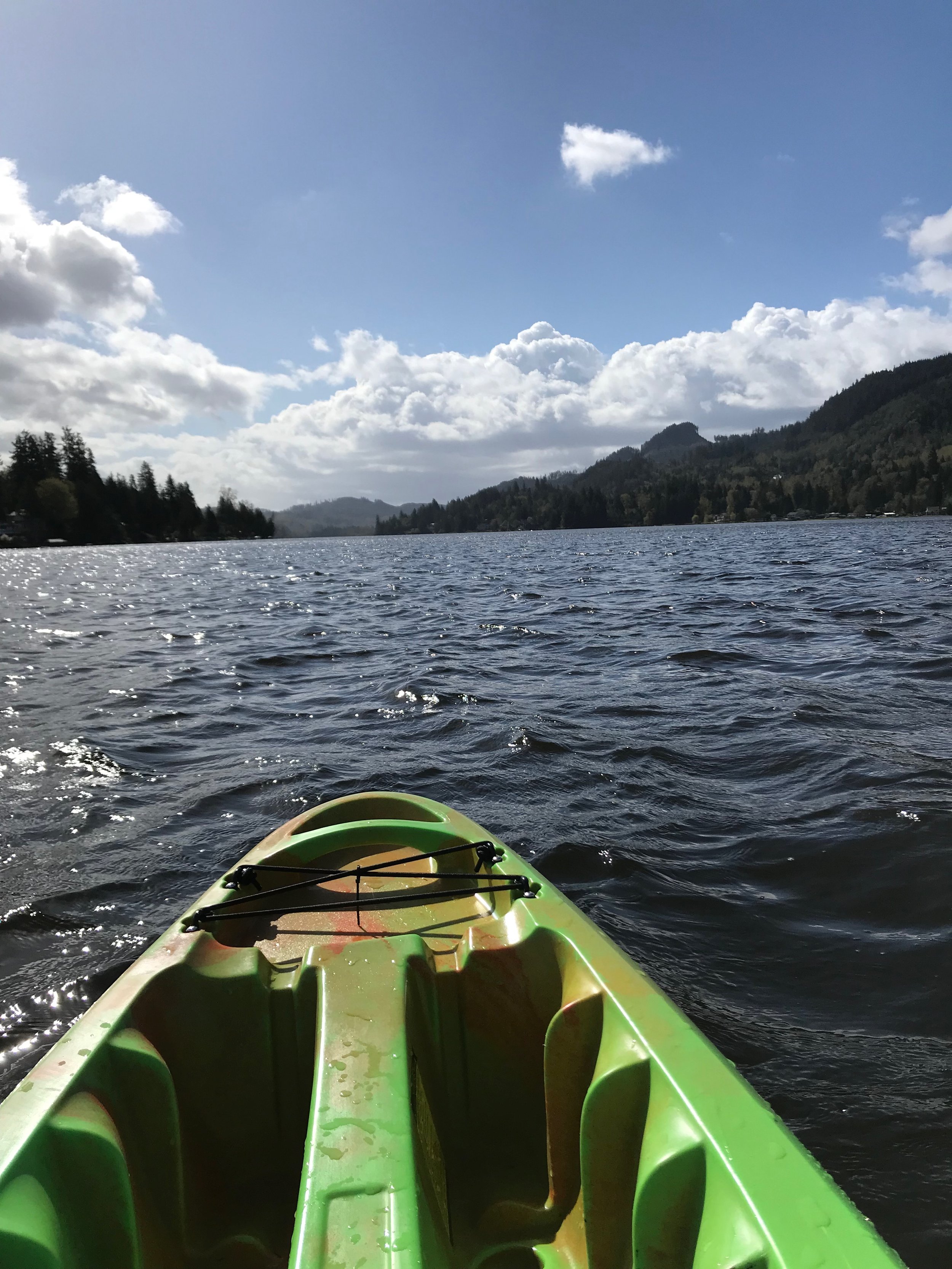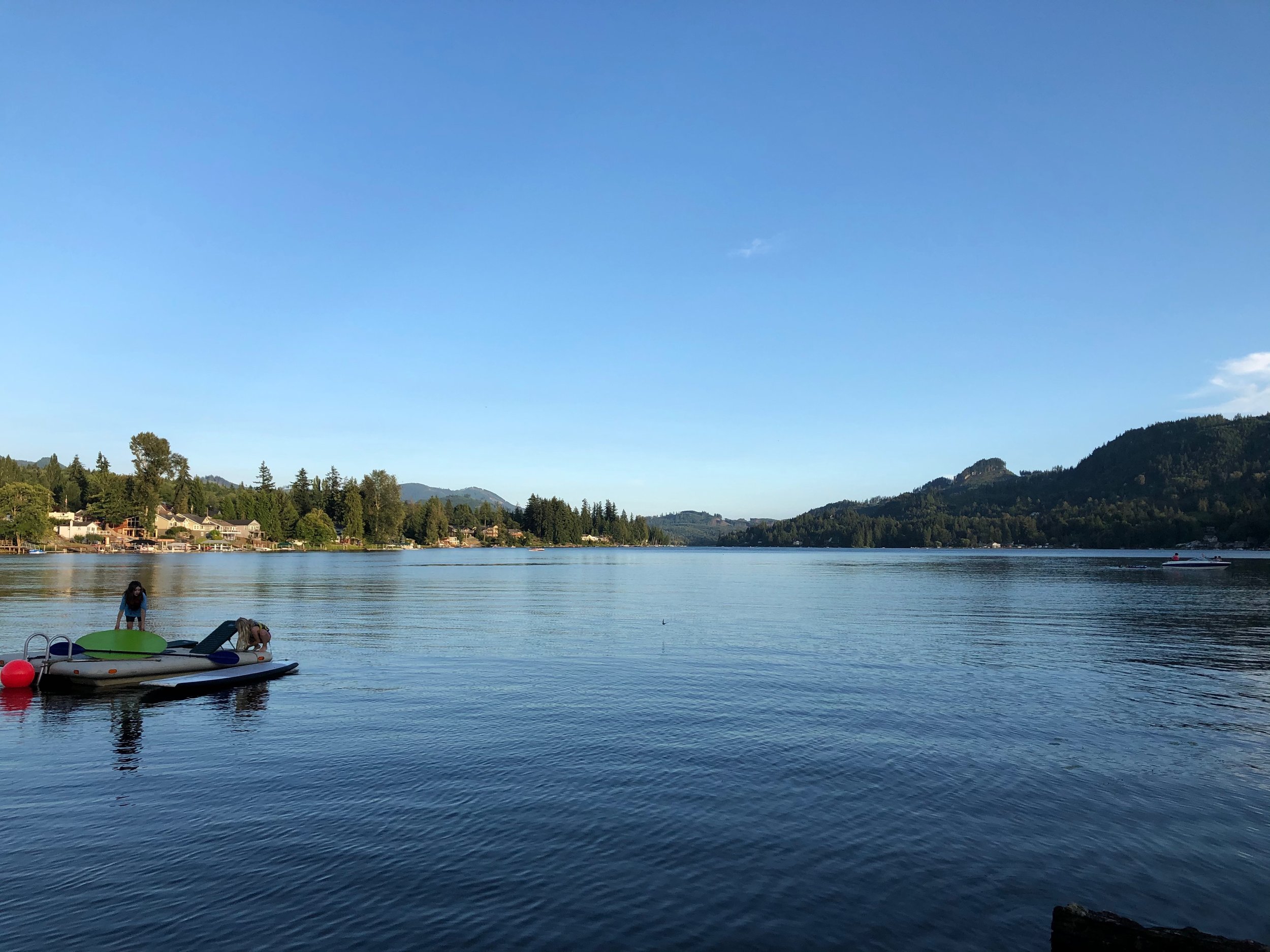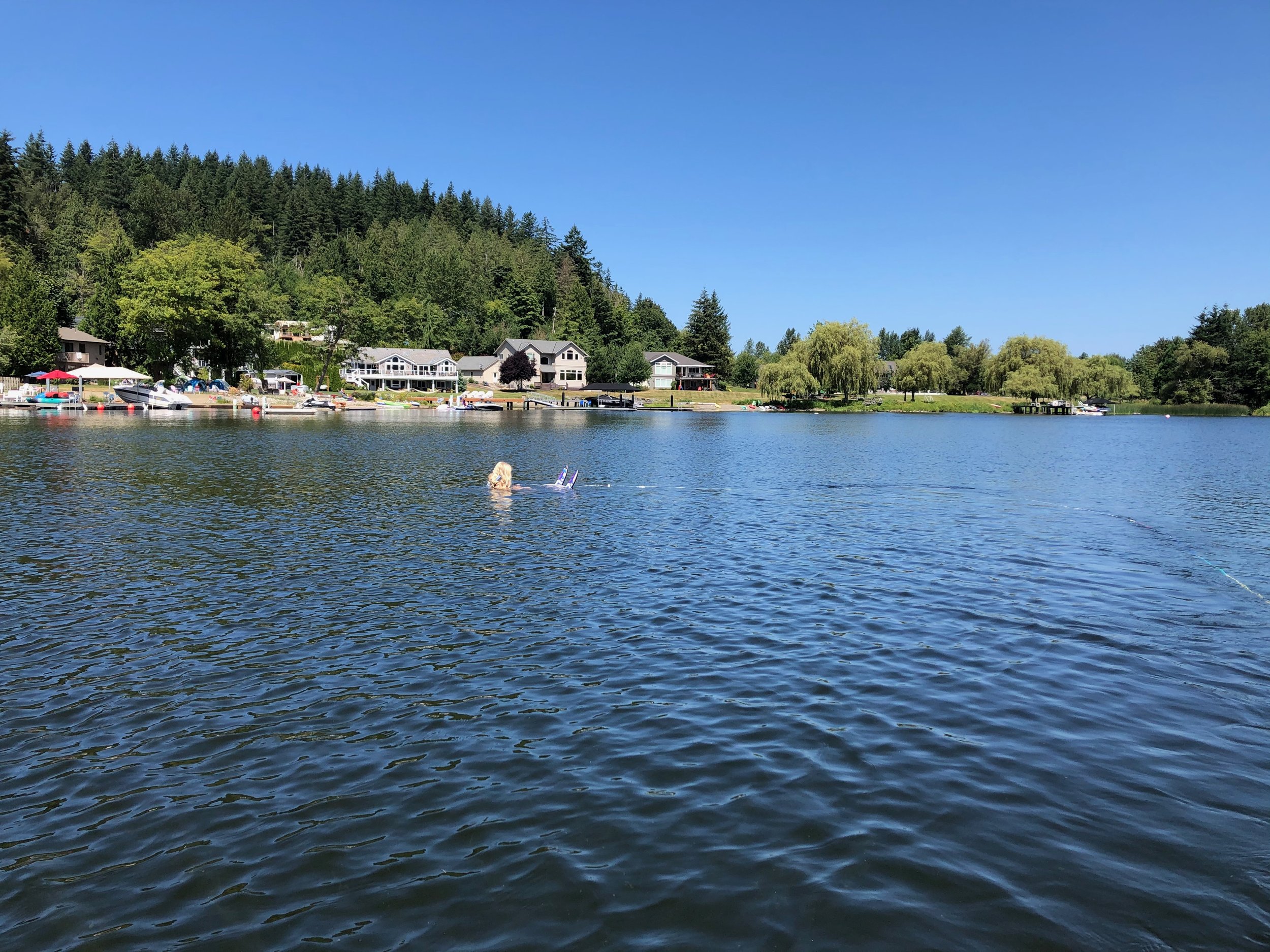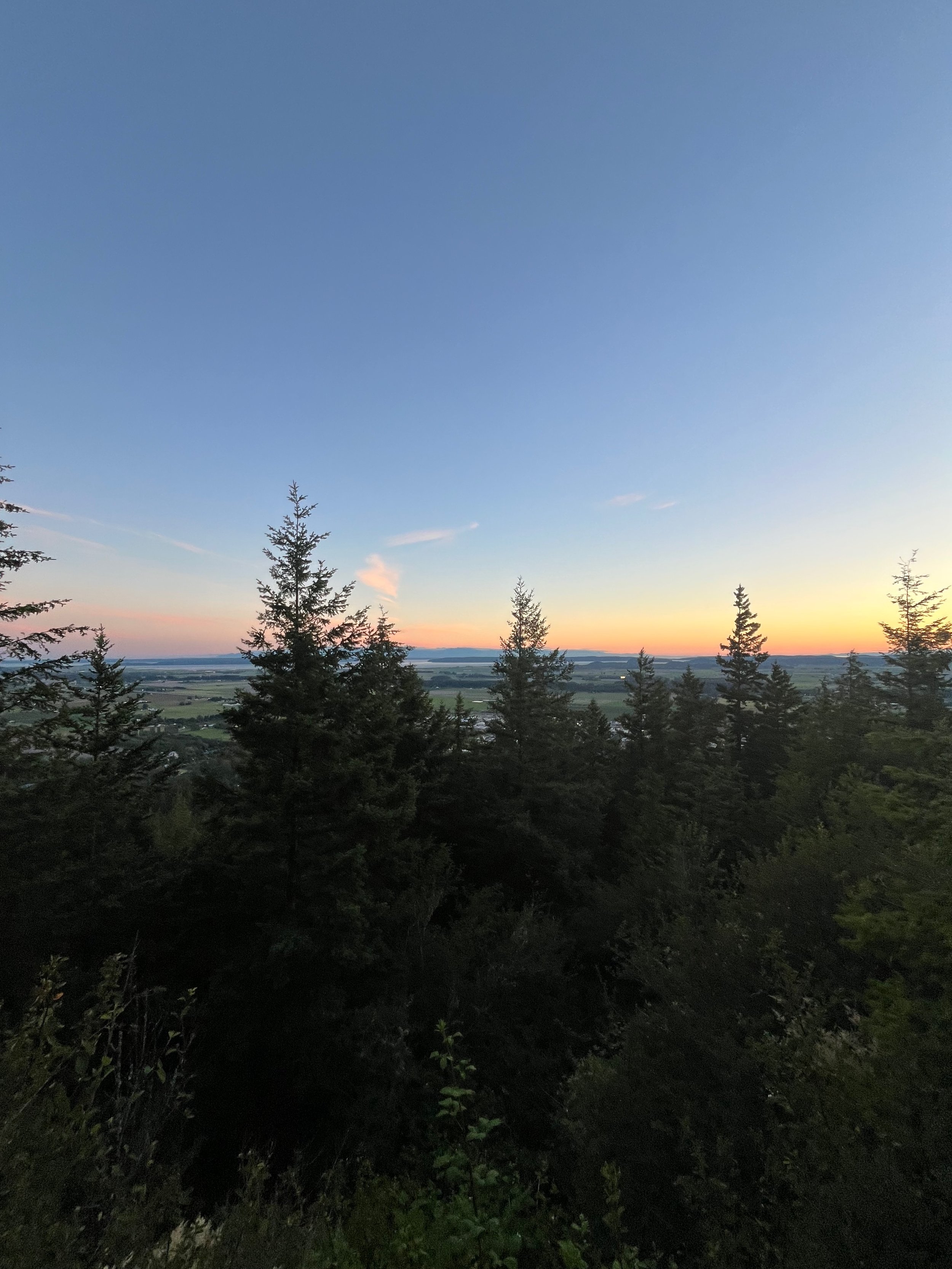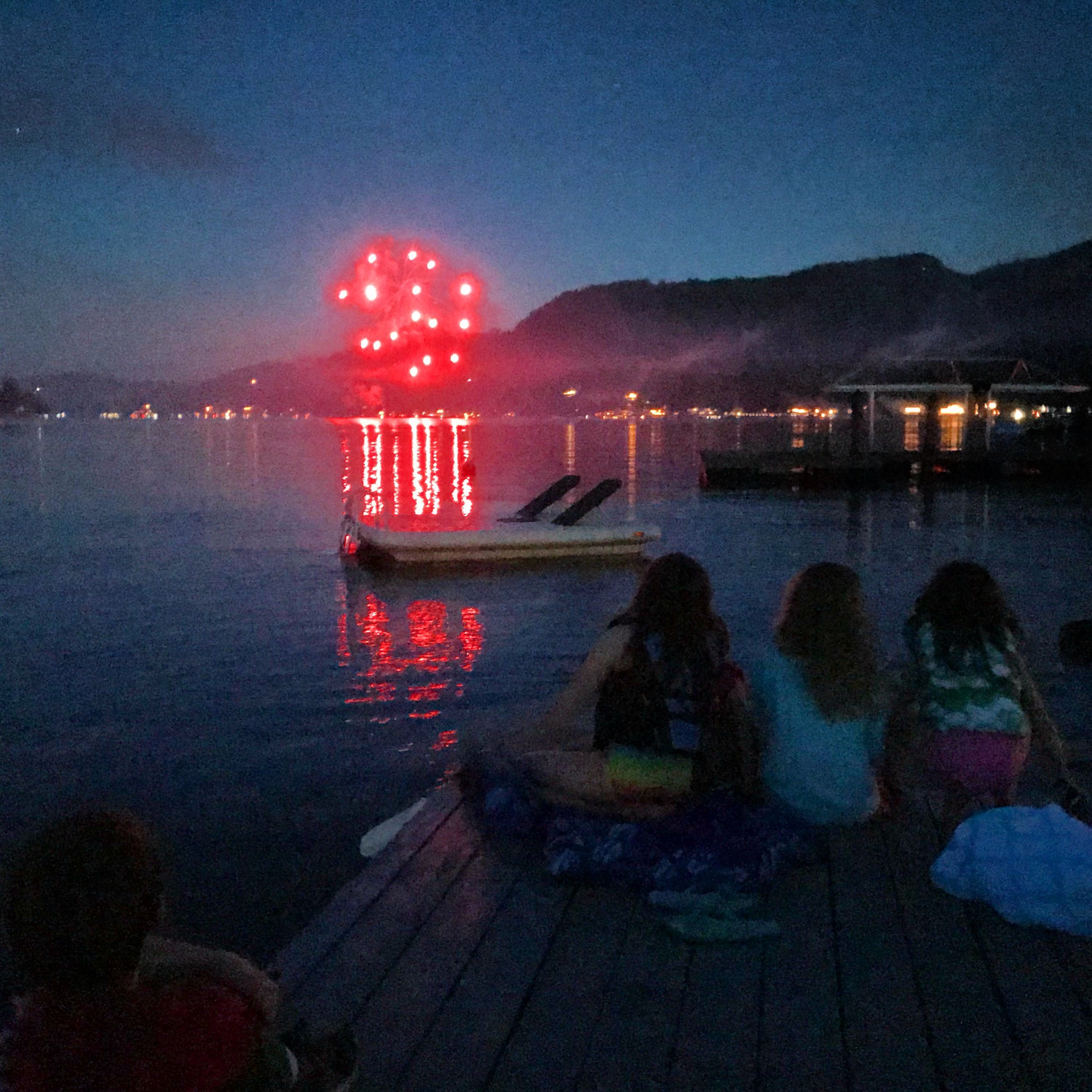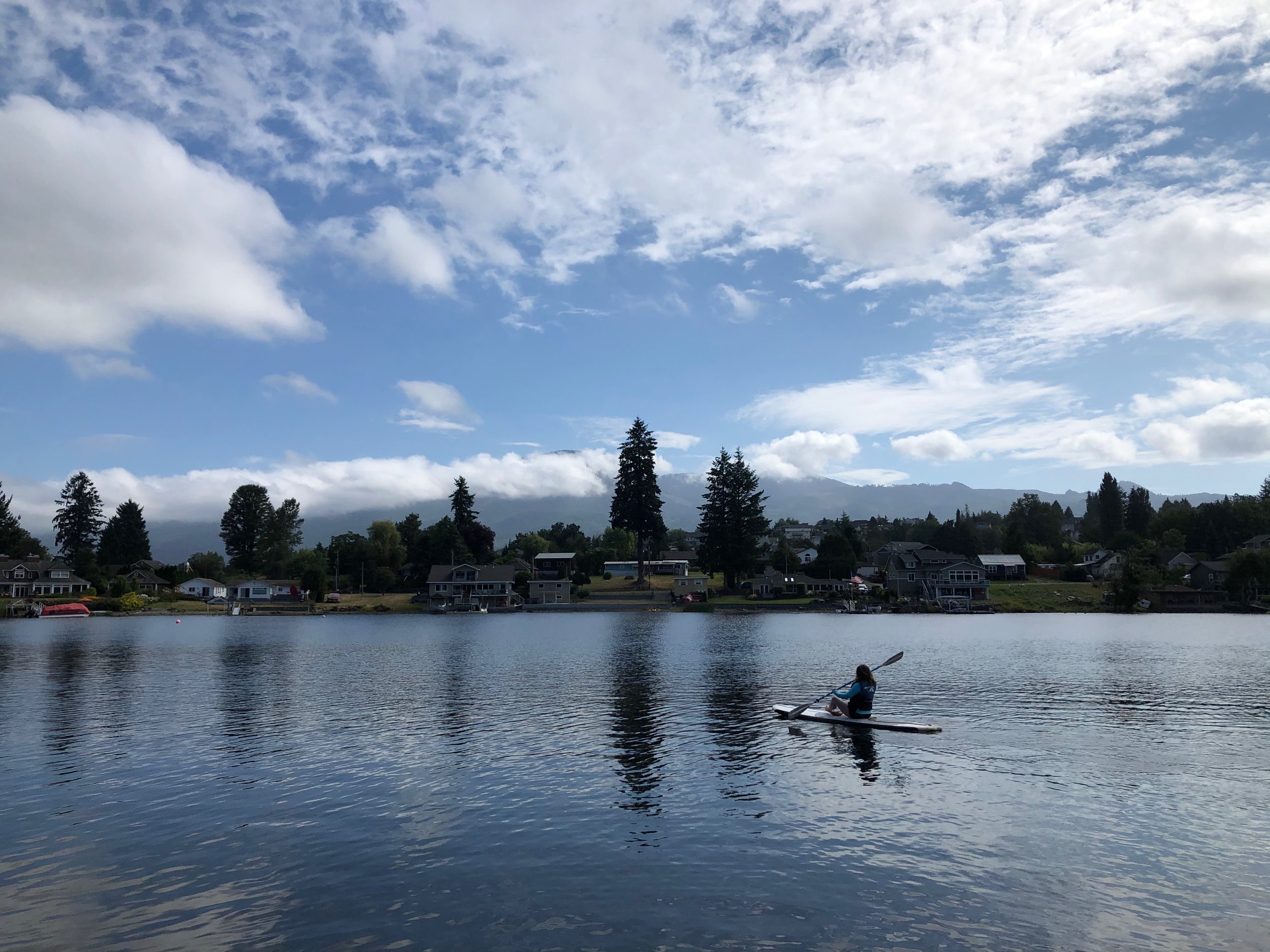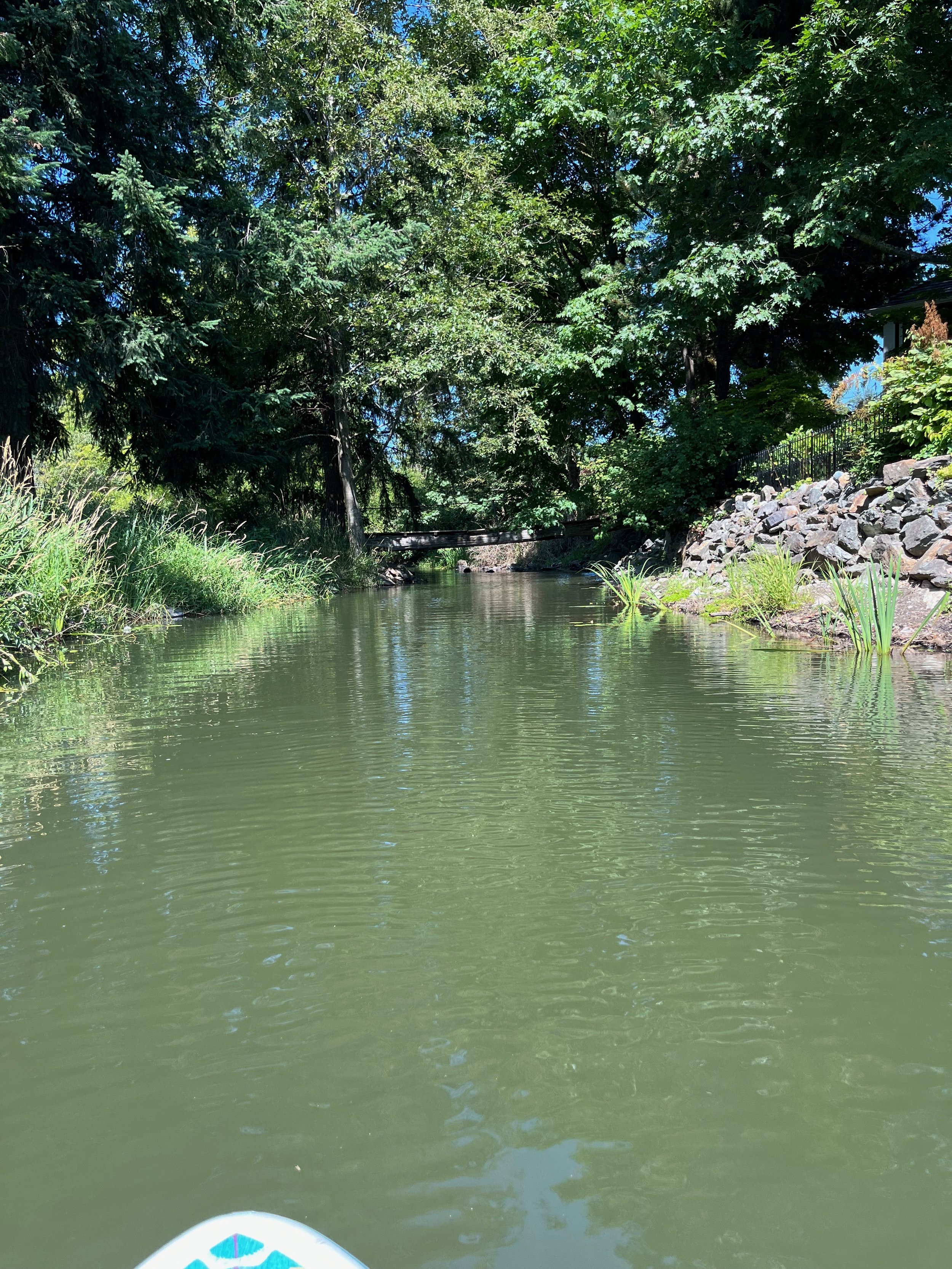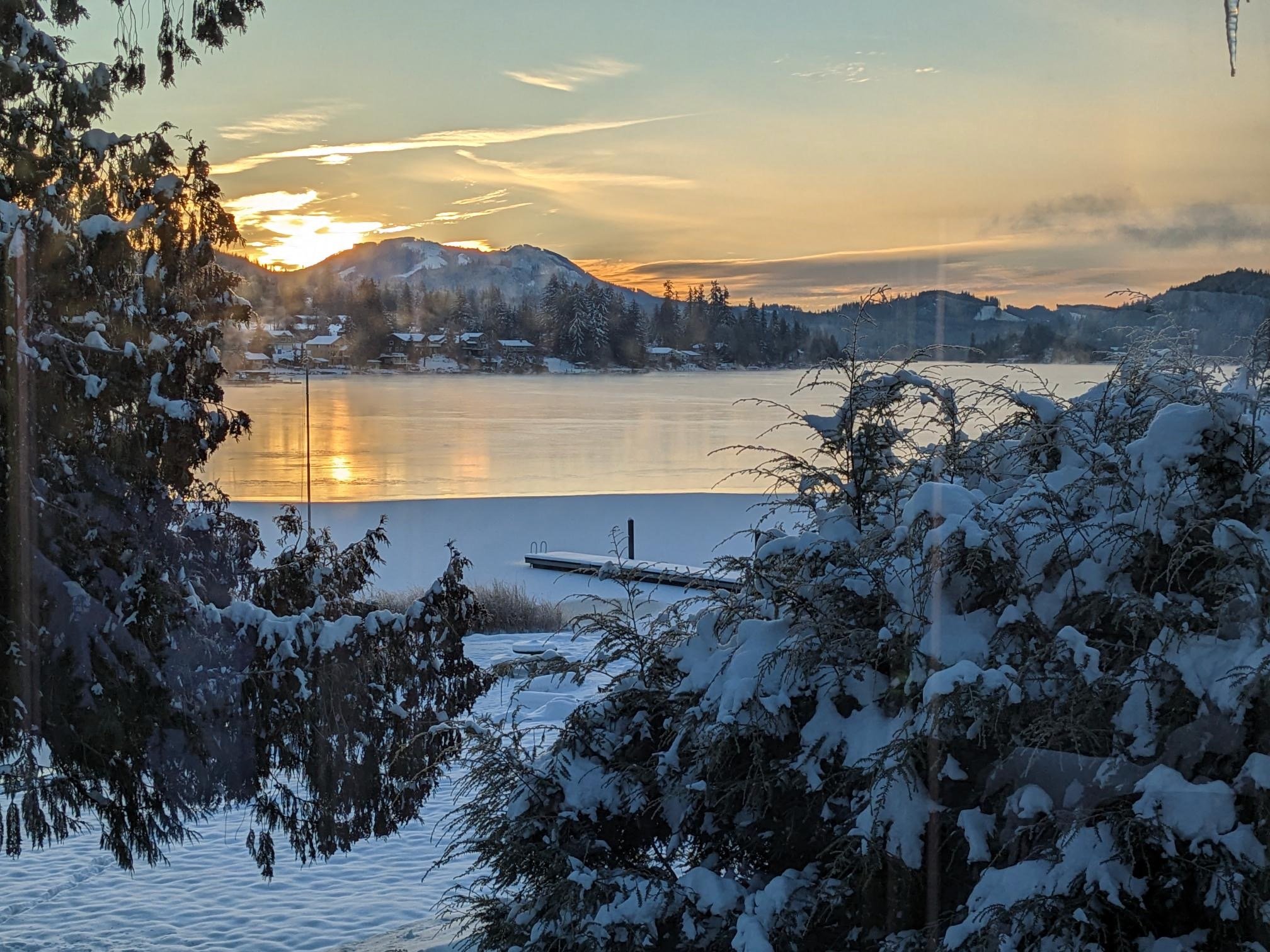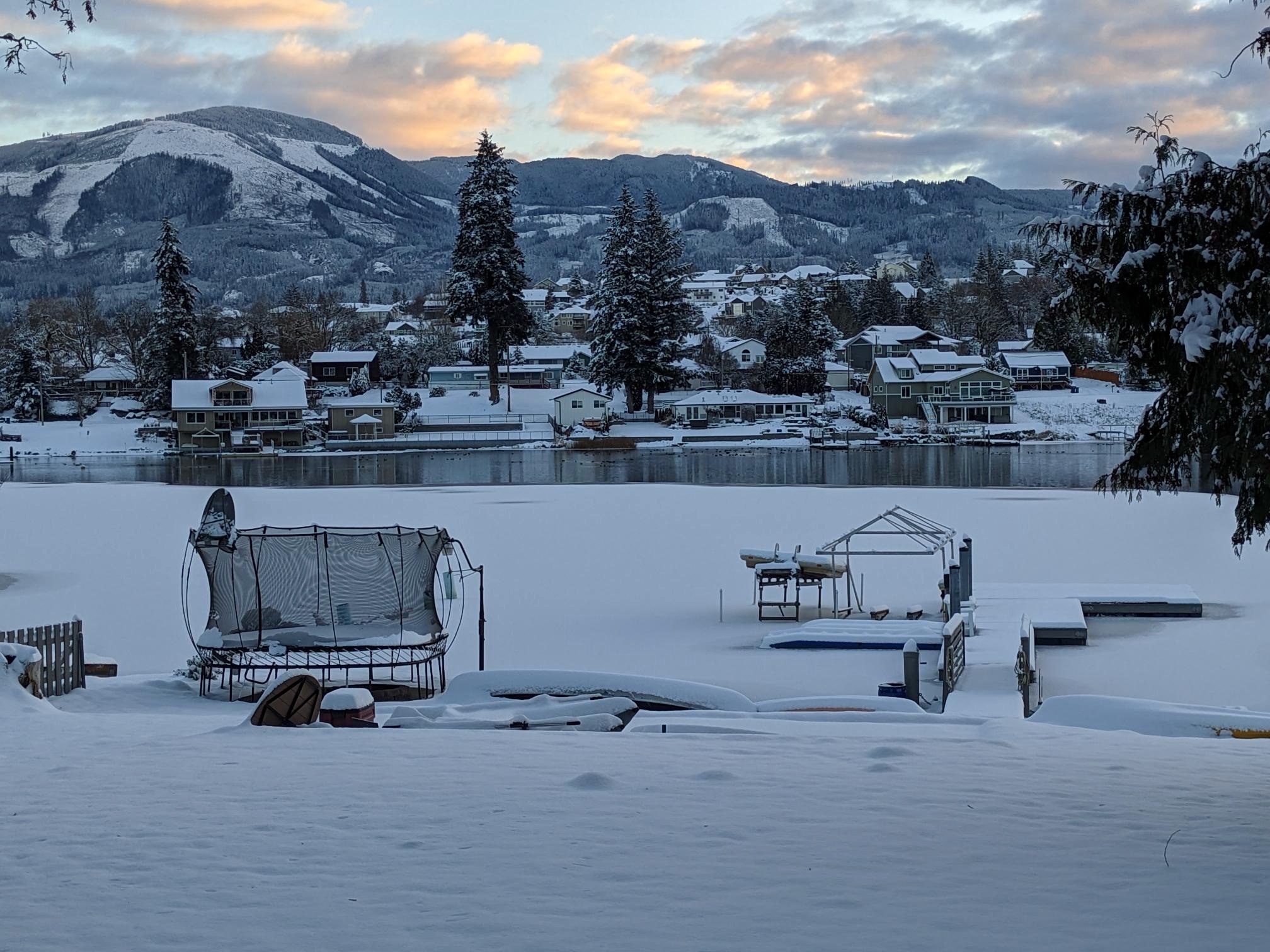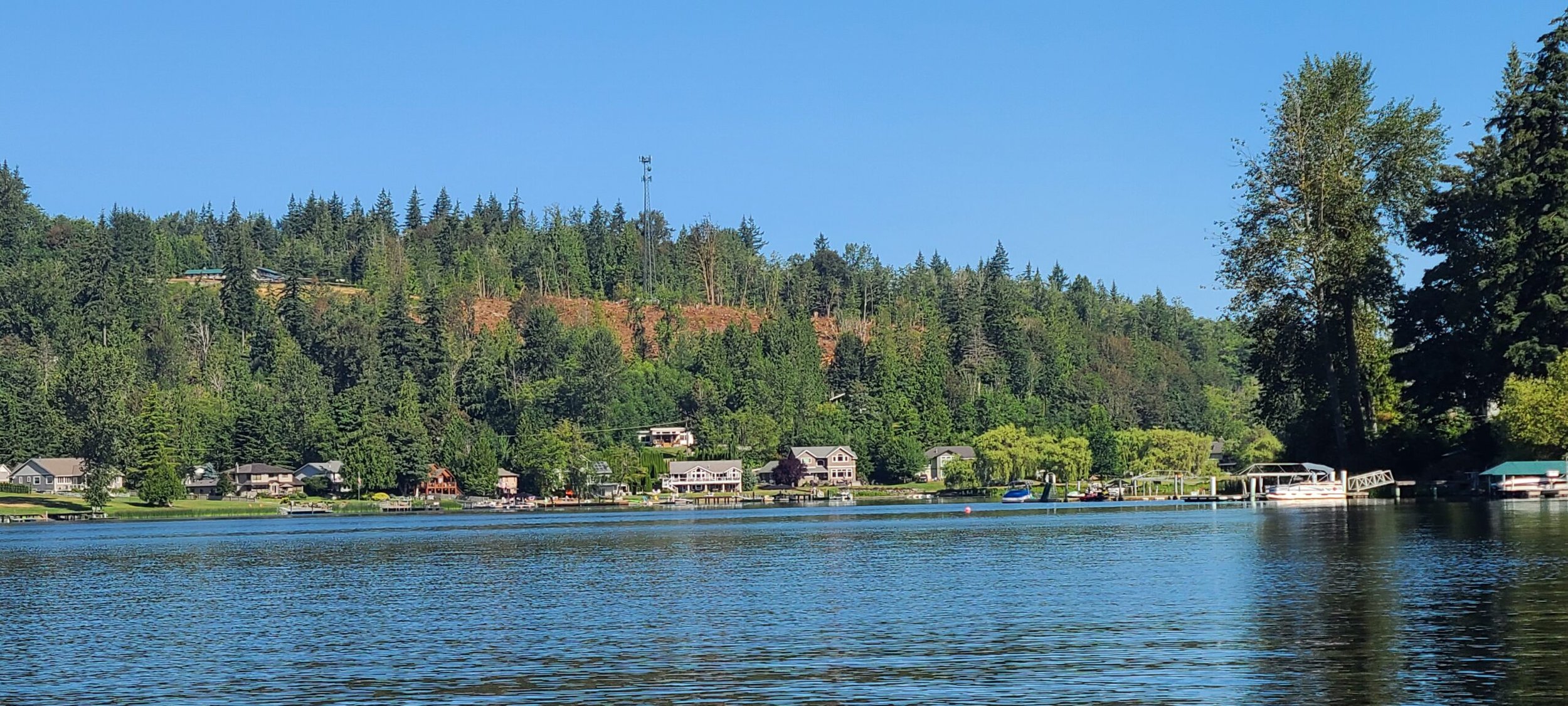
Protecting Big Lake Then and Now
Big Lake Water. The way of our lives, our health, recreation, and happiness.
A History of protecting Big Lake
The community of Big Lake has invested immensely over the years to help clean and protect Big Lake water quality – from the addition of sewer infrastructure in the late 70s and early 80s to the continued annual water treatments funded by assessments placed on waterfront owners. Our lake is naturally fed by stormwater from the surrounding hills, uphill lakes, and streams.
It is important for our community to be aware and educated of proposed developments like the one planned above the Overlook Golf Course shown below. Rural land will be converted into a residential neighborhood of 105 new homes and will discharge stormwater runoff into Big Lake. This water could include dissolved lawn fertilizers, roof treatments, fluids from automobiles, tire particulates, and so much more. There is currently no precedent for such a large residential development draining stormwater into Big Lake today.
The precedent set by this new 105 lot development will likely pave the way for additional future development and direct stormwater discharge into Big Lake. The county is under pressure to generate housing to meet the Growth Management Act (GMA) and deliver on the Skagit County Comprehensive Plan (link).
The Reserve at Overlook Crest will be located above the Big Lake Overlook Golf Course. The residential lots, associated open space tracts, and the development of associated infrastructure improvements, including public roadways and utilities. The Overlook Crest development will add runoff into Big Lake. Delivering nutrients that feed algae, and other toxic materials, including roadway and tire chemicals such as 6PPD which are known to kill juvenile salmon. A balanced and natural solution which protects the existing water quality of Big Lake should be mandated by the Big Lake Community. Revised solutions for the development could include reverting to natural infiltration that would require less impervious surfaces, one way to do this is to reduce the planned housing density. Pushing for an alternate solution that requires all stormwater to be managed within the residential development will help maintain our water quality.
This development and every other future development around the lake has the potential to further degrade Big Lake’s fragile ecosystem. Meanwhile, the Department of Ecology has confirmed there will be no requirement to perform water quality testing of this stormwater runoff!
Have you noticed the recent tree clearing North of Big Lake above the Fire Department? Did you know that this large parcel is zoned Rural Village Residential? This could be the next housing development which will require a drainage solution. That drainage solution could also be to Big Lake…
Please think of your children and grandchildren and all the generations to follow who will play, swim, ski, and recreate in our beautiful Big Lake. Our water quality today is questionable leading to lake health and personal health questions. This stormwater drainage from 105 new homes is not going to improve Big Lake’s water quality. The Washington State Department of Ecology has found both Dioxin and Methyl Mercury within Big Lake. Both at the highest Category 5 level. Additionally, Dioxin is a known CARCINOGEN in humans since it causes lymphomas and has been shown to cause liver, lung, mouth, tongue, and skin cancer in animals.
